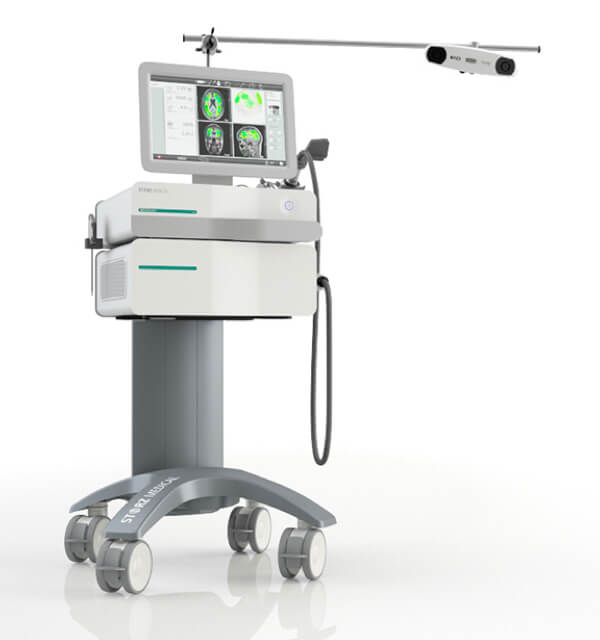
Which Potential Alzheimer’s Cures Show Promise for Future Treatment?
The breakthrough treatments and potential “cures” mentioned in this article are currently being researched, tested and assessed, and are not available for patients in the UK yet. Their safety and efficacy will need to be evaluated over a long period of time in clinical trials.
There is currently no known Alzheimer’s cure, though a few treatments do exist, such as acetylcholinesterase inhibitors, memantine, cognitive stimulation, and transcranial magnetic stimulation (TPS®).
Alzheimer’s is one of the most widely researched diseases in the world, and many new drugs and therapies are tested every year, however due to the complexity of the disorder, and the sparsity of our knowledge about its origin and precise mechanisms, it is very difficult to create one that works effectively with minimal side effects. Here we discuss three new treatments for Alzheimer’s which could show future promise in the battle against the disease.
Donanemab
Donanemab is an antibody therapy currently being tested by US pharmaceutical company Eli Lilly. Donanemab antibodies target the amyloid plaques which form in the brain of Alzheimer’s patients, aiming to break them down and restore communication between neurons.
They have recently completed a two-year, phase 2 clinical trial, which included 272 patients with mild Alzheimer’s symptoms. Patients who received the drug by intravenous infusion every four weeks had a 32% slower rate of mental decline than those who were given a placebo. After six to twelve months of treatment, patients showed significant reductions in plaque volume in comparison with the control group.
The main side effect seen in participants was an accumulation of cerebrospinal fluid in the brain, which occurred in close to 30% of patients, however most had no symptoms.
Initial results look positive, however Eli Lilly have said that “there is no guarantee that future study results will be consistent with study findings to date, that Donanemab will prove to be a safe and effective treatment, or that Donanemab will receive regulatory approval”. Further clinical trials will be needed before the drug is given approval by regulatory bodies.
Aduhelm
Aduhelm (also called aducanumab) is a new drug developed and produced by US pharmaceutical company Biogen. Like Donanemab, Aduhelm works by targeting amyloid plaques in the brains of Alzheimer’s patients. Unlike Donanemab, Aduhelm is actually approved for use in the United States as of 7th June 2021, after it was given “accelerated approval” by the FDA, an approval method reserved for drugs which treat highly harmful diseases which have been shown to provide promising results over other currently available treatments. The drug is not currently available in the UK, but is currently undergoing assessment by NICE. Their decision should come by the middle of next year at the earliest, and it is unclear whether the drug would be available through the NHS.
One issue with Aduhelm is that the treatment costs $56,000 a year (£40,959), which both makes it unlikely to be available through the NHS, whilst also being unaffordable for the majority of patients if available privately. Aduhelm is also only recommended for patients in the very early stages of Alzheimer’s.
UPDATE: As of 16th December 2021, the European Medicines Agency’s Committee for Medicinal Products for Human Use (CHMP) recommended the refusal of the marketing authorisation for Aduhelm, as their independent research found that the drug does not appear to be effective at treating adults with early-stage symptoms. Japan’s drug review board has also decided to reject Biogen’s application to market Aduhelm in Japan, as they have ruled that existing data didn’t support an approval and are therefore seeking additional clinical data.
Beta/Gamma Secretase Inhibitors
Beta and gamma secretases are two executioners of the metabolism of amyloid precursor protein, which forms the amyloid beta plaques present in Alzheimer’s patients. This group of drugs, a few of which are currently undergoing clinical trials, may be particularly exciting as rather than just break down plaques, they may be able to prevent their formation in the first place.
These drugs are still in very early clinical trials however, and their effectiveness and safety are yet to be tested on humans. In one 2021 study, researchers have found that repeated, low doses of a gamma secretase inhibitor eliminated Aβ production in mice and rats, without causing any toxic side effects. The drug was also safe and effective in macaque monkeys, reducing Aβ levels by up to 70%.
While testing and refining needs to be done to prove the efficacy, safety and reliability of these treatments, it does provide some hope that a cure for Alzheimer’s will one day be readily available. The disease affects 1 in every 6 people over the age of 80, and can put huge physical and emotional strain on both the individual and those that care for them. Until then, treatment options are available. Alzheimer’s Clinics only provide TPS®, however other treatment options are discussed on our Alzheimer’s page.
40hz light therapy
One particularly interesting novel treatment for Alzheimer’s currently being researched involves only a flickering light, and may be able to be performed in patient’s homes.
The brain produces different types of “waves” of activity which signify different neurological states. Beta waves indicate arousal, alpha waves indicate non-arousal, theta waves are associated with idea formation. One type of wave, gamma waves, are involved in processing information and learning. Gamma waves range from 25 to 140 hertz. People often show a lot of this kind of activity when they are at peak concentration. One effect Alzheimer’s (and some other neurological disorders) have on the brain is the disruption of these gamma waves, which they think may result in some of the cognitive decline.
Since 2009 Dr Li-Huei Tsai, a neuroscientist at MIT, has been using a technique called optogenetics, in which brain cells respond to a flash of light, to influence gamma oscillations. One effect this has, is causing immune cells in the brain to change shape and better dispose of waste in the brain, including Aβ plaques.
Tsai and her colleagues exposed mice with Alzheimer’s to strobe lights flickering at 40hz for an hour a day over the course of a week. 24 hours after the end of the experiment, the animals showed a 67% decrease in amyloid plaques in the visual cortex compared with controls. If that wasn’t enough, it also reduced the levels of tau proteins, another hallmark of Alzheimer’s.
Although these results are promising, thorough human trials are needed. These trials are currently ongoing, and some pilot studies have found similarly encouraging results in participants. If successful, this gamma therapy could provide a safe, non-invasive and accessible therapy that people could receive in the comfort of their own homes with a specialized device.




